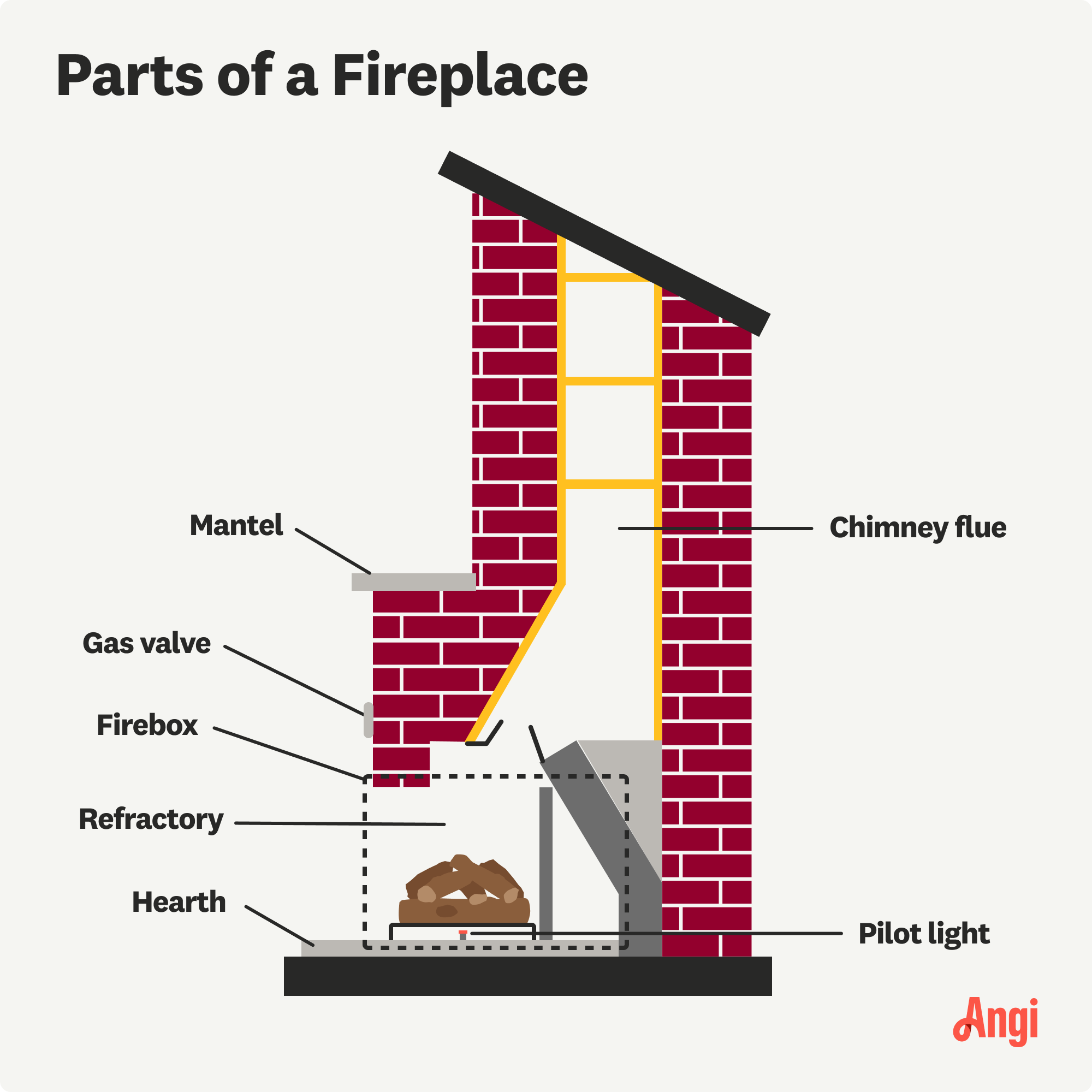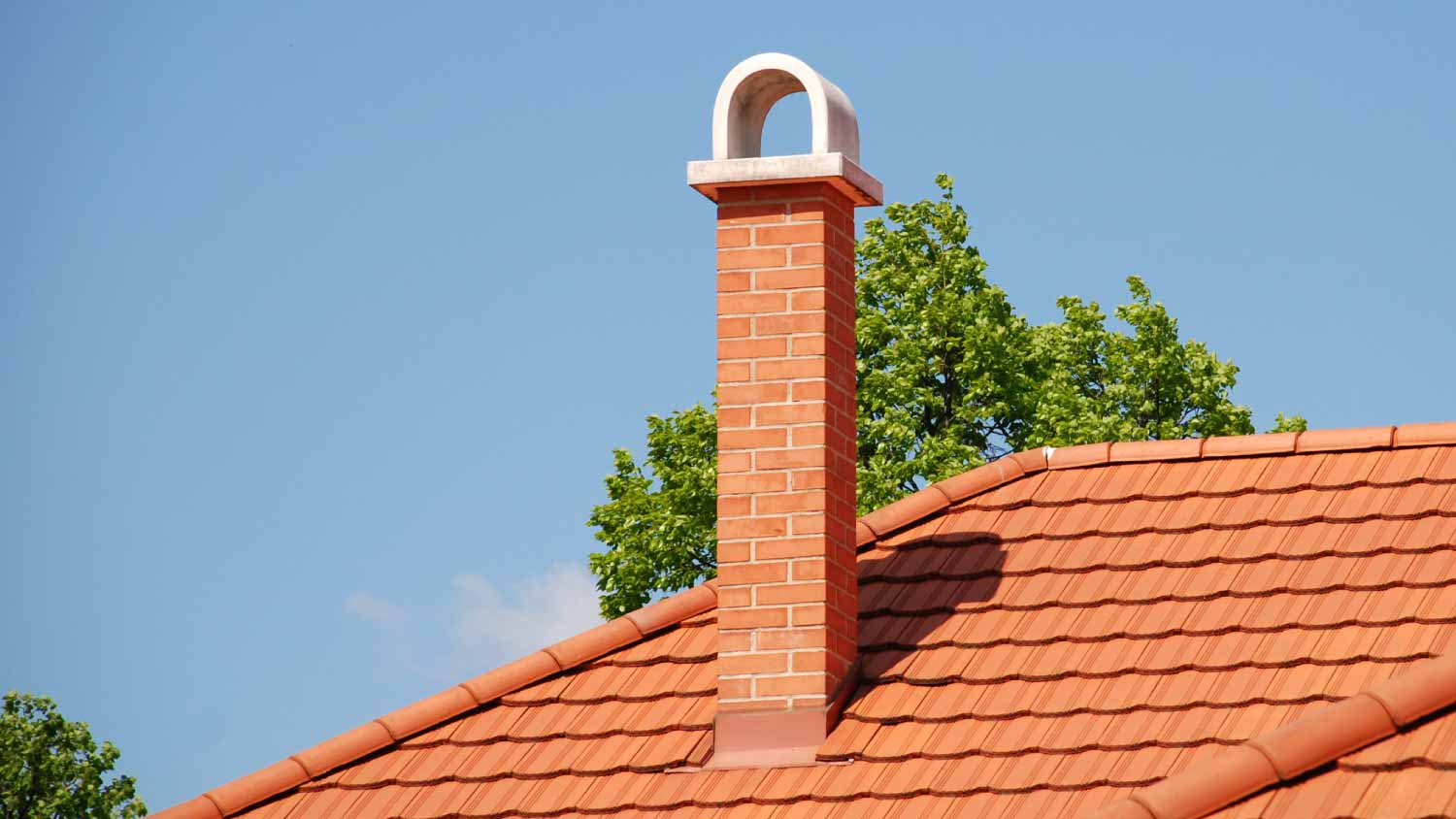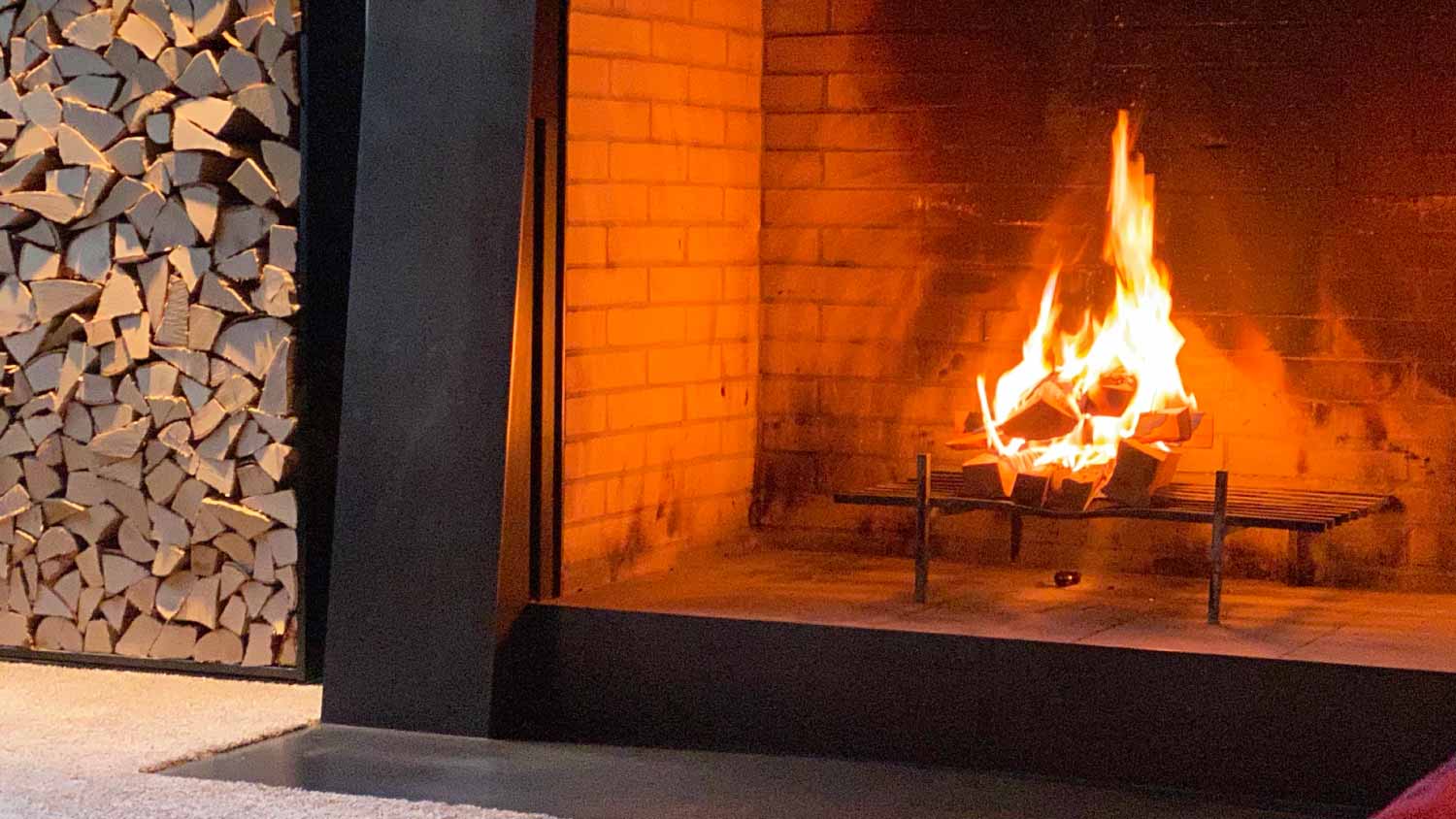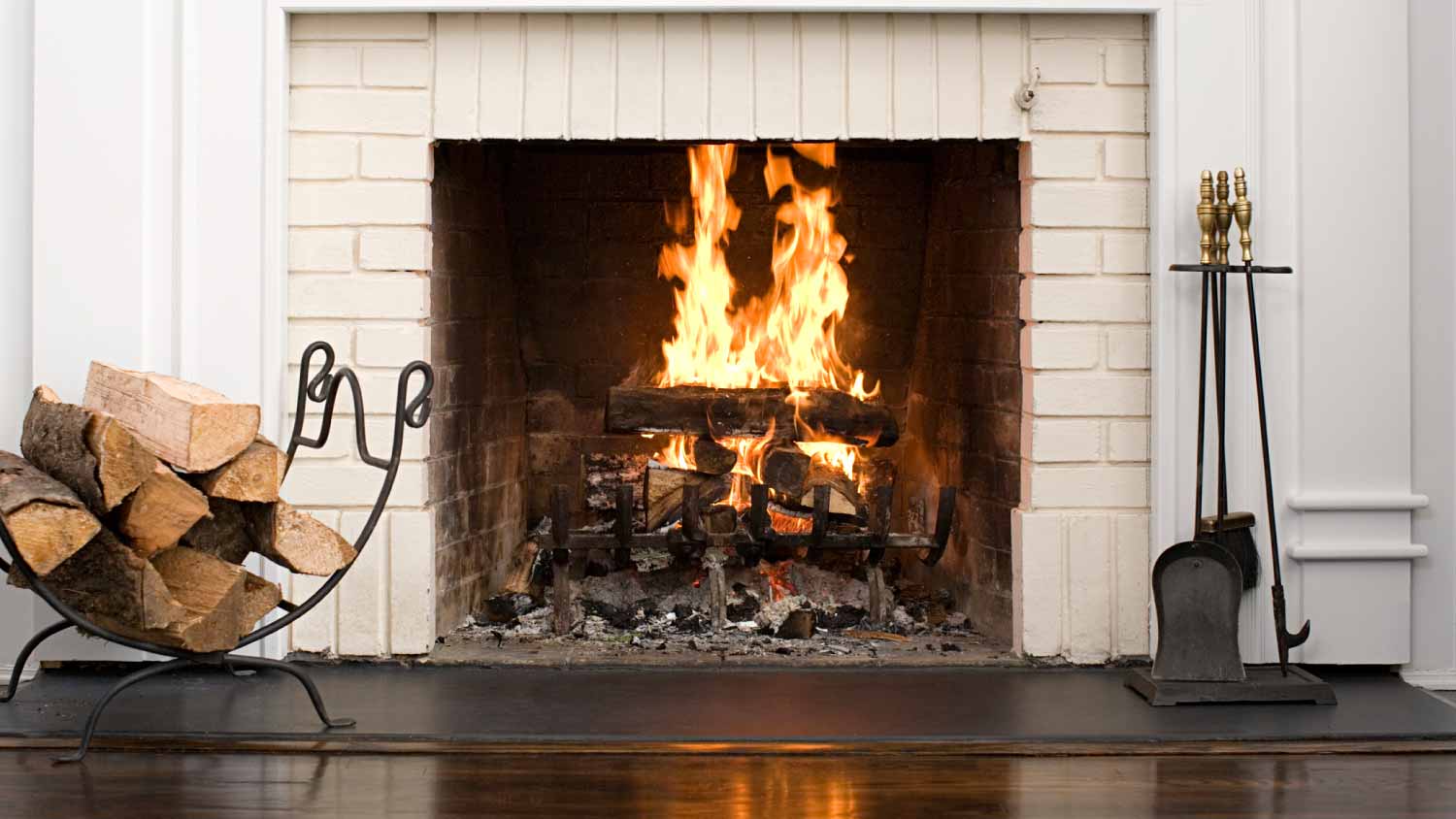
The average fireplace installation cost is $2,438, but prices vary depending on the type and size of the fireplace. Calculate your costs with our guide.
Get familiar with your fireplace


From the firebox to the flue, each part of a fireplace plays an important role in the overall operation.
Ongoing maintenance of all fireplace parts is vital for personal and home safety.
While DIYers can perform basic maintenance tasks, repairs are better left to the pros.
It’s easy for the glow of flickering flames to steal the spotlight, but there are many parts of a fireplace working hard behind the scenes to create that cozy ambiance. Whether you have a traditional wood-burning fireplace or a gas- or electric-powered one, it’s important to have at least a basic comprehension of its parts so that you know how and when to maintain your fireplace.
This guide will walk you through the various parts of a fireplace so that you’ll understand how a well-maintained fireplace keeps your home warm and safe.

There are a lot of parts of a fireplace you could learn about, but here are 11 of the most important to know if you have a fireplace or are preparing to install a fireplace soon.
The chimney is the tower that begins at the top of the firebox and goes up and out over the home’s roofline to vent the smoke from a burning fire. There are different types of chimneys, including masonry and prefabricated.

A chimney flue is the duct that runs up and out of the chimney, carrying with it the smoke and combustion gases that result from a burning fire.
The mantel is the ornamental ledge or shelf over the firebox that’s often used for small decor and photo frames.
The gas valve turns the gas to the fireplace burner off and on. On some fireplaces, it might also allow you to adjust the flame height or heat level.

The firebox is the main internal chamber where the fire burns. It houses the wood logs or the gas or electric insert that produces the flames. It is often lined with heat-resistant fire bricks.
The interior lining of the firebox is made from heat-resistant refractory panels, which often look like bricks, that reflect the heat from the flames and protect the overall structure of the fireplace.

The fireplace hearth is the floor of your fireplace, from the inside of the firebox and extending outward about 16 inches. The hearth might be raised or flush with the floor, depending on the fireplace’s design.
Just like on other gas-powered appliances, the pilot light is a small flame that burns continuously. When you turn on your gas fireplace, the pilot light ignites the gas.
This aptly named part creates a spark or small flame that lights up the pilot light, which in turn ignites the main burners.
The thermocouple is a safety device often found in older gas fireplaces. It senses when the pilot light is on or off. When it’s off, the thermocouple turns off the gas valve to stop a leak.
This is similar to a grouping of thermocouples, but it’s more sensitive and therefore more accurate. It turns the heat from the pilot light into an electrical current that sends power to the gas valve or, in the case of newer gas fireplaces, to the remote, wall switch, thermostat, or other part.
Ongoing fireplace maintenance is imperative for homeowners. Some tasks have to be done once a year, while others must be done every time a fire is lit.
Keep the firebox clean: Sweep out the soot and ash between uses.
Inspect the damper: Check annually to make sure it can still open and close properly.
Sweep the chimney: This annual task is best left to the pros. It’s a must to get rid of any creosote buildup.
Examine the hearth: Check regularly for any cracks or other damage.
Check the gas source: If you have a gas-powered fireplace, hire a pro to check the gas lines and pilot light each year.
Creosote is a flammable residue that builds up due to incomplete combustion and can cause chimney fires if not cleaned regularly. Hire a chimney sweep to remove creosote build up at least once per year—or more frequently if you use your fireplace often.
You might be able to do some small repairs and ongoing maintenance tasks, but due to the inherent danger of a faulty fireplace, it’s best to call a pro for most repairs. The actual cost of fireplace repair will depend on the size and type of fireplace. However, homeowners can expect to pay between $180 and $1,000, with an average cost of $600 for fireplace repair.
Gas fireplaces are more expensive to repair, with a range between $200 and $1,000. Wood-burning fireplaces cost between $180 and $980. Call a fireplace professional near you for gas and wood-burning stove maintenance. Electric fireplaces cost between $100 and $700 on average to repair, and you’ll need to call a local electrician to make those repairs.
Repairing parts of a fireplace can be a cost-effective way to improve its overall performance. However, repairs are only a good idea if your fireplace is fairly new and if the parts are showing minor wear.
A well-functioning fireplace isn’t just about creating a warm ambiance. It’s also about creating a safe environment for your home. If there is a major component that’s malfunctioning or you have any safety concerns about using your fireplace, it’s best to replace it rather than repair the offending part. While the up-front cost for a replacement is likely more expensive than a quicker repair, you might actually save money over time in terms of energy costs and maintenance.
From average costs to expert advice, get all the answers you need to get your job done.

The average fireplace installation cost is $2,438, but prices vary depending on the type and size of the fireplace. Calculate your costs with our guide.

A fireplace remodel cost depends on the extent of the remodel and the materials you choose. Use this guide to calculate your costs and budget accordingly.

If you’re thinking about installing a new fireplace, you might wonder: How much does it cost to run a gas fireplace? Let’s review the numbers.

You can get the shiplap trend in your home in just a few days’ time by flexing your DIY skills. Learn how to build a DIY shiplap fireplace with this guide.

Your burning fireplace questions don’t have to go unanswered. Before hiring a pro for brick or stone fireplace repair, here’s what to discuss.

Want to know how to build a fireplace to add charm and warmth to your home? We’ll walk you through the steps—and let you know when to call in the pros.